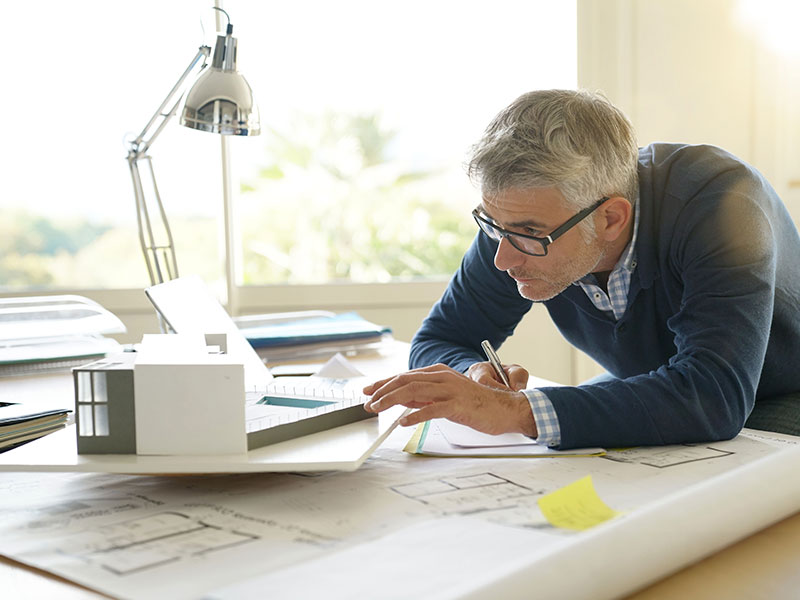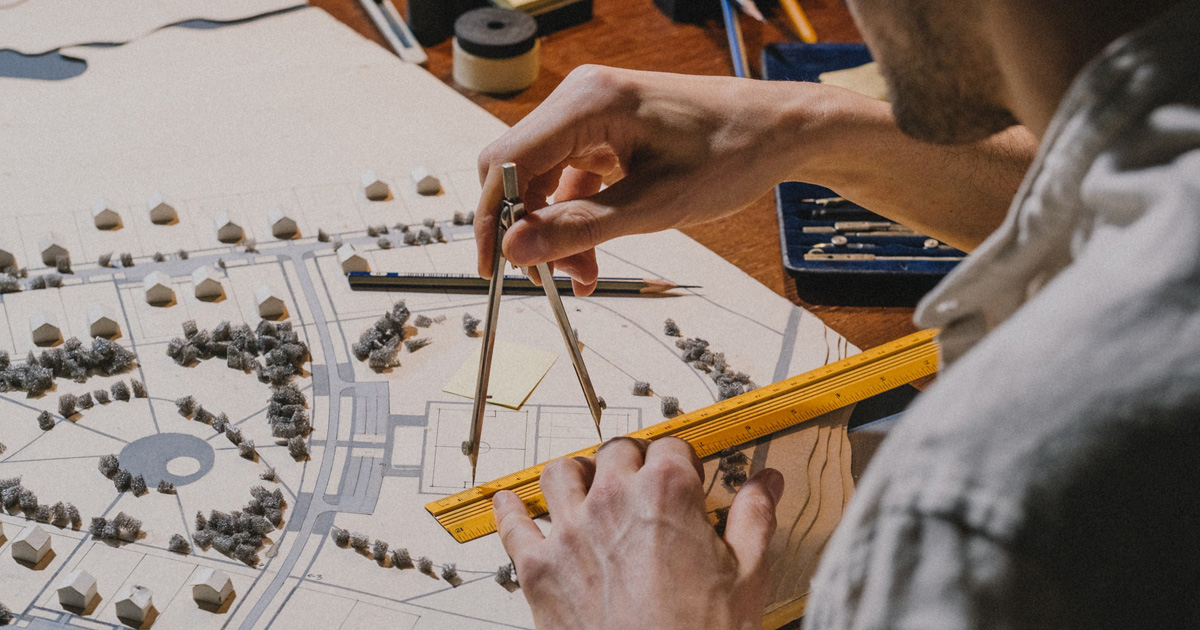Architect Career Path: Competencies, Education, and Development Guide
Architect Career Path: Competencies, Education, and Development Guide
Blog Article
Comprehending the Diverse Occupation Paths Available for Aspiring Architect
As a hopeful Architect, you have a world of profession paths waiting for you. Whether you're drawn to typical architecture or the nuances of sustainable layout, there's a particular niche that straightens with your interests.
Standard Design: Designing Structures and structures
Typical architecture concentrates on making structures and structures that blend performance with visual allure. As you discover this field, you'll appreciate the elaborate equilibrium in between kind and objective. You'll learn to draw motivation from historic designs, including components like symmetry, materials, and craftsmanship. Your styles can show social heritage, showcasing local traditions while satisfying contemporary requirements.
You'll develop skills in preparing, model-making, and website analysis, enabling you to envision and interact your concepts properly. Involving with customers, you'll need to recognize their vision and convert it right into possible layouts.
Furthermore, constructing codes and sustainability methods are crucial in your job, ensuring your frameworks are eco pleasant and secure. As you grow in your profession, you'll find possibilities in household, industrial, or perhaps restoration tasks, each offering special difficulties. Embracing typical design paves the means for a satisfying profession that admires the past while forming the future.
Urban Planning: Forming Neighborhoods and Public Spaces
As an aspiring Architect, you can play a crucial function as an urban organizer, transforming how areas connect and operate. By utilizing community involvement strategies, you'll assure that locals have a voice in forming their atmosphere. And also, integrating lasting style concepts will help develop areas that not just satisfy today's requirements however likewise secure the future.
Function of Urban Planners
While numerous may believe of designers as the sole visionaries behind buildings, metropolitan coordinators play a necessary duty in forming the wider landscape of neighborhoods and public spaces. By working together with different stakeholders, you'll assist create parks, transportation systems, and property locations that advertise social interaction and access. Your knowledge in spatial layout and area characteristics allows you to visualize future development while maintaining cultural heritage.
Community Engagement Approaches
Effective community interaction strategies are essential for city organizers to guarantee that the voices of citizens are listened to and valued in the planning process. To promote significant discussion, you should prioritize open online forums and workshops where area members can express their ideas and issues. By proactively paying attention and including feedback, you'll produce areas that show the neighborhood's demands, inevitably leading to even more lasting and effective city settings.
Lasting Layout Concepts
When making city areas, including sustainable style concepts is essential for producing atmospheres that grow both ecologically and socially. You ought to start by focusing on power efficiency, utilizing materials that lower waste and advertise recycling. Take into consideration integrating environment-friendly areas, like yards and parks, to boost biodiversity and enhance air quality. Promoting walkability and public transportation can reduce dependence on cars and trucks, promoting a healthier neighborhood.
Designing with water preservation in mind is likewise key-- assume regarding rain yards and permeable surface areas to handle stormwater. Involving area members throughout the planning procedure assurances that the spaces you produce meet their demands and encourage social communication. By accepting these principles, you'll add to vibrant, sustainable city landscapes that benefit everybody.

Landscape Style: Developing Lasting Outdoor Environments
As you discover landscape style, you'll find important design concepts that produce useful and attractive outside spaces. Lasting methods play an important duty in making certain these atmospheres thrive while minimizing ecological impact. And also, you'll discover a selection of occupation opportunities that permit you to make a genuine distinction in exactly how individuals engage with nature.
Design Concepts in Landscape
Understanding style principles in landscape design is important for developing sustainable exterior environments that balance with nature. You'll need to consider elements like proportion, range, and balance to ensure your layouts feel natural and welcoming. Incorporating indigenous plants not just enhances biodiversity however additionally decreases water use, making your landscape resistant. Think of the circulation of space and exactly how individuals interact with it; pathways and seating locations need to invite exploration and leisure. In addition, focus on seasonal adjustments, making with products that enhance the surroundings year-round (Architect). By focusing on sustainability and aesthetic appeals, you can produce exterior spaces that enhance the neighborhood and advertise wellness. Welcoming these principles will certainly establish a solid foundation for your profession in landscape design.
Lasting Practices Summary
Lasting techniques in landscape style not just concentrate on appearances but additionally focus on environmental health and wellness and resource conservation. By incorporating indigenous plants, you improve biodiversity and decrease the need for chemical plant foods and chemicals. Applying reliable irrigation systems helps preserve water and lessens overflow, safeguarding nearby ecological communities. You can make areas that promote soil health and wellness, such as practicing and utilizing organic materials permaculture concepts. In addition, incorporating environment-friendly framework, like rain gardens and porous sidewalks, aids in stormwater management and lowers metropolitan heat. You add to a healthier earth and offer rooms that foster area connection when you produce exterior atmospheres with sustainability in mind. Inevitably, these methods assure your designs profit both people and the setting for many years to come.
Career Opportunities Exploration
With a strong structure in lasting practices, landscape design supplies a selection of profession courses that permit you to make a meaningful effect on the atmosphere. You could function as a landscape designer, creating visually pleasing and functional exterior spaces, or specialize in ecological remediation, assisting to revive damaged environments. Urban planners commonly team up with landscape engineers to develop environment-friendly spaces in city setups, boosting city livability. If you're enthusiastic concerning education and learning, take into consideration coming to be a landscape style instructor, inspiring future generations. Furthermore, you may collaborate with nonprofits focused on environmental sustainability or take part in research to introduce brand-new methods. Each path not only shapes beautiful environments yet additionally promotes a healthier planet for future generations.
Sustainable Layout: Focusing on Eco-Friendly Practices
As you explore your occupation in architecture, welcoming green methods can establish you apart in a competitive area. Sustainable layout concentrates on developing buildings that decrease environmental influence while enhancing passenger well-being. By integrating renewable materials, energy-efficient systems, and lasting building methods, you'll contribute to a greener future.
Begin by obtaining expertise of green accreditations like LEED or BREEAM, which can boost your qualifications. Take into consideration just how all-natural light, air flow, and thermal performance can maximize layout. Team up with engineers and environmental professionals to introduce services that lower waste and save resources.
Don't neglect the importance of neighborhood involvement-- interesting regional stakeholders can inspire styles that harmonize with the atmosphere. As customers progressively focus on sustainability, your experience in environment-friendly techniques will certainly not just attract projects however likewise accomplish your interest for liable architecture. Embrace this essential aspect of the profession, and view your occupation grow.
Historical Conservation: Securing and Recovering Social Heritage
While you start on your building trip, think about the important duty of historical conservation in keeping our social heritage. This area concentrates on the security and repair of considerable buildings, sites, and structures that tell the tales of our past. By participating in historical preservation, you'll help safeguard the architectural heritage that forms neighborhood identity.
As a historical preservation Architect, you'll assess historic importance and assess the problem of structures. You'll work very get more info closely with conservationists and chroniclers to ensure authentic reconstruction methods are utilized. This career course allows you to mix creativity with study, enabling you to design options that respect initial materials and workmanship.
Your work not just contributes to sustainability by recycling existing buildings however also cultivates a sense of satisfaction within communities. Accepting this course will aid you become a guardian of background, preserving the tales and aesthetic appeals that enrich our lives.
Inside Style: Enhancing Indoor Spaces
Historic conservation and interior design both share a commitment to enhancing the constructed setting, however they concentrate on different facets. While historic preservation highlights preserving a framework's social and historic value, indoor design zeroes in on optimizing indoor areas for functionality and looks.
As an ambitious Architect, you'll find that indoor style allows you to blend imagination with technological skills. You'll develop areas that not just get more info look excellent but likewise promote convenience and performance. This area involves understanding exactly how light, shade, and products connect within a space, affecting mood and functionality.
You'll function on numerous projects, from domestic homes to industrial workplaces, making certain that each setting meets the needs of its residents. By prioritizing individual experience, you can change insides right into motivating and functional areas, making a substantial effect on exactly how people engage with their environments. Accept the possibility to boost interior settings and form the means individuals live and function.
Industrial Layout: Combining Capability With Aesthetics
Industrial design plays an important function in producing products that perfectly blend aesthetic appeals with capability, making sure that what you utilize day-to-day is not only visually enticing but also sensible. As a hopeful Architect, you might engage yourself in this field, concentrating on developing everything from furniture to consumer electronics. Your job entails comprehending user demands, materials, and manufacturing procedures, allowing you to develop cutting-edge solutions that enhance everyday experiences.
In commercial layout, you'll often work together with designers, marketing experts, and producers, making sure that your layouts are not just gorgeous however additionally practical. This profession path uses a vibrant setting where creative thinking fulfills practicality, making it a rewarding choice for engineers interested in shaping the items of tomorrow.
Often Asked Concerns
What Educational Accreditations Do I Required to End Up Being an Architect?
To end up being an engineer, you'll need an expert level in style, usually a Bachelor's or Master's. Furthermore, you'll have to finish a teaching fellowship and pass the Architect Enrollment Exam to practice legally.
Exist Accreditation Requirements for Various Building Profession Paths?
Yes, there're qualification demands for various building courses. Architect. You'll need to pass tests, total teaching fellowships, and often pursue specialized training, relying on your selected focus, like landscape design, urban layout, or historic conservation
What Software Program Abilities Are Vital for Architects Today?

Just How Can I Gain Practical Experience While Researching Design?
You can acquire sensible experience by interning at architectural companies, taking part in design competitors, offering for neighborhood jobs, or teaming up with schoolmates on real-world jobs. These possibilities boost your abilities and build beneficial connections in the industry.
What Task Opportunities Exist Outside Typical Architecture Firms?
You can discover different work chances outside traditional design firms, like city preparation, interior decoration, landscape style, building administration, actual estate advancement, and even duties in sustainability consulting. Each deals unique difficulties and benefits.
Whether you're drawn to conventional style or the subtleties of lasting layout, there's a niche that straightens with your passions.When developing city areas, incorporating sustainable design principles is important for creating settings that prosper both environmentally and socially.As you discover landscape style, you'll find essential style concepts that produce functional and lovely outside areas.Recognizing design concepts in landscape design is essential for producing sustainable outside environments that harmonize with nature.In commercial layout, you'll commonly collaborate with designers, makers, and online marketers, check here ensuring that your designs are not only attractive yet also viable.
Report this page